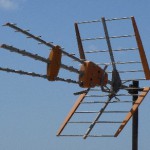“Private wireless is currently one of the more exciting RAN segments, partly because of the more favorable growth trajectory compared to the broader RAN market,” says Dell’Oro Group vp Stefan Pongratz, “while it is still early in the private 5G journey, and it will take some time before enterprise spending will move the larger RAN needle, initial readings suggest private wireless moved above the noise in 2024, representing around 3 to 5 percent of total RAN.”
Wide-area deployments increased at a faster rate thanCampus Network in 2024.
The evolving scope of private wireless taken together  with the fact that the $20 B+ enterprise RAN opportunity remains largely untapped is spurring interest from a broad array of participants across the ecosystem. Still, the traditional RAN suppliers are currently well-positioned in this initial phase.
with the fact that the $20 B+ enterprise RAN opportunity remains largely untapped is spurring interest from a broad array of participants across the ecosystem. Still, the traditional RAN suppliers are currently well-positioned in this initial phase.
The top 3 Private Wireless RAN suppliers in 2024 excluding China include Nokia, Ericsson, and Samsung.
Nokia is the leading Campus Network Private Wireless RAN supplier in 2024, while Huawei is the leading Wide-Area Private Wireless RAN supplier over the same time period.
The forecast has been revised slightly upward to reflect the higher starting point and the improved enterprise sentiment.
At the same time, the high-level message that we have communicated for some time has not changed—private wireless is a massive opportunity, but it will take some time for enterprises to embrace private cellular technologies.
Private Wireless RAN revenue is expected to grow at a 15 to 20 percent CAGR and account for 5 to 10 percent of total RAN by 2029 (public RAN is expected to decline at a 1 percent CAGR over the same period).s




